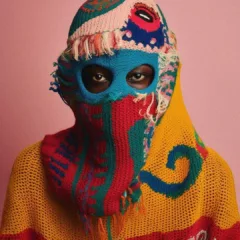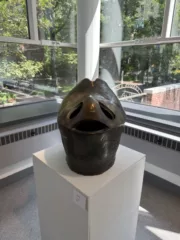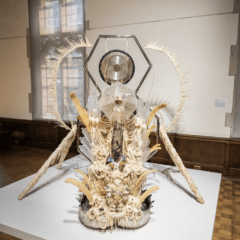Resident artists of Philadelphia: yes, you are being tracked by researchers at the University of Pennsylvania. Resident artists is one of 50 cultural data sets mapped out in “CultureBlocks,” an interactive map of Philadelphia’s cultural assets that the city officially launched on Tuesday, April 30, 2013.
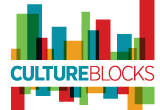
The purpose of CultureBlocks
Based on data from the University of Pennsylvania’s Social Impact of the Arts Project (SIAP), CultureBlocks is a map of cultural institutions and assets throughout Philadelphia. It’s not aimed at tourists or the art-viewing audience looking for a good show on a First Friday; CultureBlocks is actually intended as a sociological research tool.
“The purpose of the tool is to help people make decisions, and those might be site decisions and they might be programmatic decisions,” said Moira Baylson, Deputy Cultural Officer of the Philadelphia Office of Arts, Culture and the Creative Economy, at a press conference last Thursday. “It’s really helpful for developing proposals and seeing what’s on the ground.”
Essentially, CultureBlocks is a first step toward organizing data about cultural assets in a way that will benefit city planning decisions. After all, it’s some of the poverty-stricken neighborhoods of Philadelphia that that have attracted artists and art-lovers from around the nation, and those neighborhoods are now among the city’s healthiest, according to CultureBlocks.
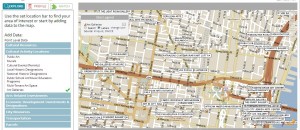
CultureBlocks is the result of almost three years of planning and a $250,000 grant from the National Endowment of the Arts to The Reinvestment Fund, the city’s Commerce Department, the Office of Arts, Culture and the Creative Economy, and Penn’s SIAP.
The final product is a clunky, interactive map that resembles a Java applet from the internet of the late 1990s. But the lack of sleek visuals or ease of use may be due to the academic, sociological roots of this project.
How to use the tool
Users can choose to either “Explore” – scrolling around the map of Philadelphia and accessing different layers of data, create a “Profile” of the area they’re interested in learning about, or “Match” a program with their interests by filling in different attributes. The map can be manipulated to show art galleries, art schools, public art locations, libraries, schools, public transit routes, bike trails – or all of these at once. CultureBlocks also allows users to draw their own geographic area of interest and then pull a report on all the cultural institutions and demographic data available about the area. All data from the program can be imported to Excel. SIAP’s website states that they draw their information, for example about resident artists, from IRS tax data.
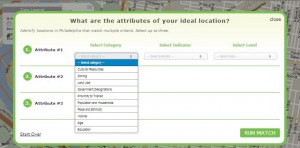
According to SIAP’s web site, “CultureBlocks” (also known as the Creative Assets Mapping Database for the City of Philadelphia) is just “phase one” of a broader project. “Phase two” is analysis of real estate development trends and the clustering of artists, art-related businesses and other cultural resources. “Phase three” involves employing this research to improve the marketing of cultural districts and maintaining a database of Philadelphia’s cultural resources for “scholars, planners, creative industry entrepreneurs, artists and others.”
CultureBlocks is about “understanding this relationship between economic and urban recovery in neighborhoods through the lens of arts and culture,” as Baylson put it. For example, an underserved neighborhood might be a better location for artists to propose projects than a neighborhood already chock-full of cultural services and groups.
Or existing institutions in underserved neighborhoods that are already doing important work might be targeted for support of one kind or another. For example, I discovered that StarSpirit International, Inc. – an African publisher and humanitarian advocacy group that I’ve never heard of – has offices right near a studio where I occasionally work on Cecil B. Moore Avenue.
“It’s a great way to get a sense of cultural things in our neighborhood that may not be in our radar,” Baylson said.
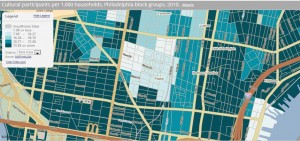
But some aspects of CultureBlocks seem a little too complicated for their own good. For example, demographic layers regarding “resident artists” and “cultural participation” max out at surprisingly low levels. As a result, there are huge patches of the city with the maximum number of “resident artists” and “cultural participation.” Yet common sense tells me that “resident artists” and “cultural participation” are not at the exact same level through University City, Manayunk, Roxborough, Old City, Center City, South Philly, Fishtown and Northern Liberties. You have to suspend your disbelief to wade through this kind of sociological generalization.
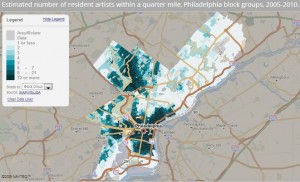
Have some fun with it
Ultimately, CultureBlocks presents such a huge amount of information that anyone interested in the arts in Philadelphia can have some fun examining the different layers of data. There are definitely large blank areas in Philadelphia where few cultural institutions can be found. Perhaps having this tool will lead some Philadelphia artists to work on filling in the blank spots.



